39 ghs label requirements 2020
GHS Labeling Requirements: The Definitive Guide [2021 Update ... - Luminer These GHS label requirements are meant to succinctly communicate key information about what is inside. However, the GHS takes into consideration that, sometimes, it's not possible to keep workers safe with only these six label requirements, which is why it also allows for supplemental information. 1. Product Identifier Global GHS Implementation 2020 - ChemSafetyPro.COM However, when different countries implement GHS through their local regulations and standards, they also introduce something new into their requirements. Here we have summarized the latest status of GHS implementation in major countries in 2019. GHS in EU/CLP GHS in USA GHS in Switzerland GHS in Turkey GHS in Australia GHS in Canada GHS in Brazil
GHS: The Globally Harmonized System for Labeling [Updated 2019] OSHA's GHS labeling requirements are now an extension of their Hazard Communication Program requirements since they have been aligned to promote continuity between SDSs and other companies labeling efforts. These requirements consist of four primary parts: The signal word. GHS pictogram (s) The hazard statement.
Ghs label requirements 2020
What Required Information Must GHS Labels Include? - MPC Here's a look at each requirement for GHS-compliant primary container labels. Signal word - The signal word, such as "Danger," or "Warning," is used to indicate the hazard level. Danger indicates the most serious hazard level, while Warning indicates a lower level of risk. What are the 6 Elements of a GHS Label? - Computype There are only two words that might hold this place on the label: "Danger" (severe hazard) or "Warning" (less severe hazard). Only one word will be on each label, to ensure it is clear to the user the severity of the hazardous chemical. 3. Hazard Statements Globally Harmonized System (GHS) Classification & Labeling of ... - SCHC This is considered an intermediate course. While there are no specific prerequisites, it is strongly recommended that participants have a working knowledge of EU and USA hazard communication principles. Course Fee: $850 / Members $940 / Non-members Course Director / Instructor Michele R. Sullivan, Ph.D.
Ghs label requirements 2020. Global GHS Label Size Requirement 2019 - ChemSafetyPro.COM Many countries have set GHS label requirements on sizes for chemical packages with different packaging capacities. Some countries have even set additional requirements on GHS label pictogram size and even font size. In this article, we will give you a brief summary of global GHS label requirements in 2018, including pictogram size requirement ... GHS Label Requirements, Guidelines, and Best Practices For example, all GHS-compliant labeling must include hazard pictograms. However, the environmental risk pictogram is optional in the U.S. but may be required on environmentally hazardous products in other countries. These labels are required for primary containers, but aren't always needed on secondary containers. unece.org › ghs-rev3-2009GHS (Rev.3) (2009) | UNECE Annex 3: Codification of hazard statements, codification and use of precautionary statements and examples of precautionary pictograms GHS Label Requirements - Imprint Enterprises Under GHS regulations, product labels have different minimum sizes based upon the capacity of the container. See GHS label requirements below. Container Capacity. ≤ 3 Liters. ≤ 3.17 Quarts. 3 - 50 Liters. 3.17 - 13.32 Gallons. 50 - 500 Liters. 13.2 - 132 Gallons.
Background: Globally Harmonised System (GHS) hazard communication requirements for labelling and safety data sheets The GHS is not a formal treaty, but instead is a non-legally binding international agreement. Therefore countries (or trading... Globally Harmonized System (GHS) Labeling Requirements: How to Comply ... Secondary containers must comply with GHS labeling requirements except when the following criteria are met: The material is used within the work shift of the individual who makes the transfer. The worker who made the transfer is in the work area the entire time during use. A Guide to GHS Labels | Lean Challenge The three most common GHS labeling options are: Order labels from a safety company. Print paper GHS labels from an inkjet or laser printer. Print your own labels using a thermal transfer printer (recommended) NOTE: When creating GHS labels, the only given regulation is that the hazard pictograms, signal word, and hazard statements should be ... GHS Compliant Labels and GHS Labeling Systems | General Data GHS labels are designed to communicate dangerous and hazardous material using a universal standard of text and pictogram formats as indicated by the OSHA's updated Hazard Communication regulations. Depending on the container being labeled, the hazmat labels may be required to utilize an approved facestock, ink and/or printing method.
Globally Harmonized System (GHS) Labeling Requirements The GHS requires proper labeling when shipping or storing chemicals. The labels should be on the individual chemicals, as well as on the outside of the larger boxes or drums that are used to ship or store the chemicals. Proper DOT labeling must also be present that corresponds correctly with the GHS labeled chemicals. Q. unece.org › ghs-rev7-2017GHS (Rev.7) (2017) | UNECE To view and download the electronic version of the 7th revised edition of the GHS click on the icon below: PDF Corrigendum to the Revision 7 PDF GHS (Rev.7) To view and download the files of each chapter individually click on the icons below: › transition-ghs7Transition to GHS 7 | Safe Work Australia Jan 01, 2017 · From 1 January 2023, only GHS 7 can be used to classify and label chemicals in Australia. Manufactures and importers of hazardous chemicals If you are a manufacturer or importer of hazardous chemicals, you must only use GHS 7 to label and make SDS from 1 January 2023. You do not have to re-label or dispose of any existing products. Hazard Communication - Overview | Occupational Safety and Health ... All employers with hazardous chemicals in their workplaces must have labels and safety data sheets for their exposed workers, and train them to handle the chemicals appropriately. Major changes to the Hazard Communication Standard
GHS Labeling Requirements - Guide to GHS Chemical Labels GHS Labeling Requirements: Information and Identification. Under OSHA's implementation of the GHS, all labels that identify hazardous chemicals should contain the following specific information: Name and contact information for the chemical manufacturer or other responsible party. Product identifier such as the name of the chemical or the ...
en.wikipedia.org › wiki › Globally_Harmonized_SystemGlobally Harmonized System of Classification and Labelling of ... GHS label format. The GHS includes directions for application of the hazard communication elements on the label. In particular, it specifies for each hazard, and for each class within the hazard, what signal word, pictogram, and hazard statement should be used. The GHS hazard pictograms, signal words and hazard statements should be located ...
What Are GHS Labels? - KHA Online-SDS Management Global Harmonized System (GHS) labels exist to classify and label chemicals. The UN originally created this system to ensure that people would have an easy way to internationally communicate how they must be handled. OSHA adopted this method in 2012 and aligned it with pre-existing US chemical labeling systems.
Global Harmonization of Hazard Classification and Labeling Systems The GHS is the culmination of more than a decade of work. After ten years of technical work and negotiation, a United Nations Economic and Social Council Subcommittee adopted the Globally Harmonized System for Classification and Labeling ("GHS") and recommended that it be disseminated throughout the world.
› new-requirements-forNew Requirements for Safety Data Sheets in 2021/2022: What ... Jan 28, 2021 · The Changes in SDS Requirements. The main provisions of the new revised Annex II are: The alignment of Safety Data Sheets with UN GHS Revisions 6 & 7. The alignment with requirements for nanomaterials. To clarify requirements related to Poison Centres (Unique Formula Identifiers (UFIs)).
single-market-economy.ec.europa.eu › sectorsClassification and labelling (CLP/GHS) Jan 31, 2020 · The GHS was adopted by the United Nations in 2002 and is periodically updated. As a front-runner, the EU implemented the GHS in the EU in 2008. What is CLP? The Regulation on classification, labelling and packaging (CLP Regulation) implements the GHS since 20 January 2009. The deadlines for substance and mixture classification under the new ...
Globally Harmonized System | Chemical Management Section For implementation of GHS for HVCs, the following Memorandum is available here: EMB MC 2017-010: Guidelines in the Implementation of Globally Harmonized System (GHS) Classification and Labeling Requirements for High Volume Chemicals (HVCs). For Toxic Chemicals under the IATA and IMDG list of Dangerous Goods: EMB MC 2020-009: Guidelines in the ...
GHS Label Requirements, Symbols, and Classifications The employee should be informed of: The requirements of 1910.1200 (h) (2) Any operations in their work area where hazard chemicals are present. The location and availability of the organization's written hazard communication program, including the list of hazardous chemicals at the workplace and the safety data sheets.
New Zealand's hazard classification system | EPA The GHS 7 is an international hazard classification system for chemicals created by the United Nations. The hazards are communicated on labels and safety data sheets including how to safely store, use and dispose of chemicals. The GHS is used by more than 50 countries, including all of New Zealand's major trading partners.
GHS Label Requirements: A Simple Guide For Cleanroom Practices To work safely in a cleanroom, it's essential to keep it as free of chemical vapors as possible. There are six elements of a GHS label which help ensure safety in cleanroom practices by minimizing exposure to contaminants. Let's look into each of those elements and what they mean to you. 1. Product Identifier.
GHS Label Requirements: The Complete GHS Labeling Guide Both primary and secondary containers need to be labeled in order to be considered GHS compliant. Primary containers are typically the large barrels, boxes, or drums that come directly from a manufacturer. Any label already placed on a primary container should not be altered or removed.
Hazard Communication - Globally Harmonized System | Occupational Safety ... In 2003, the United Nations (UN) adopted the Globally Harmonized System of Classification and Labeling of Chemicals (GHS). The GHS includes criteria for the classification of health, physical and environmental hazards, as well as specifying what information should be included on labels of hazardous chemicals as well as safety data sheets.
What is a GHS Label - Imprint Enterprises The Globally Harmonized System of Classification and Labeling (GHS) was adopted by the United Nations in 2003. This system aims to unify the labeling systems throughout the world. It classifies health, physical, and environmental hazards. GHS defines what information should be included on labels of hazardous chemicals and safety data sheets.
The Complete Guide to GHS Labels and Compliance Requirements The Required Components of a GHS Label In addition to authoring a customized written hazard communication plan, OSHA also requires employers to label each and every one of their chemicals with a corresponding GHS label, as described in 1910.1200 (f) of the HazCom/GHS standards. Here are the components that all GHS labels must include:
ec.europa.eu › growth › tools-databasesTBT - European Commission Jul 06, 2022 · In your business, you would certainly anticipate problems in order to avoid them. The same goes for regulatory barriers: if you export a product, you probably prefer to be alerted early about of new technical requirements applying to that product. In the EU, the internal market ensures that products move freely.
A Guide to OSHA's New GHS Chemical Labeling Requirements The GHS-inspired standards will require chemical manufacturers and importers to label chemical containers with 1) a harmonized signal word 2) GHS pictogram (s) 3) a hazard statement for each hazard class and category and 4) a precautionary statement. These elements are discussed in greater detail below:
GHS Label Requirements for Shipping - eSafety Training There are six GHS label requirements for any shipping container. Let's take a look at each of those requirements, as well as any supplemental information you may include on a GHS shipping label. 01. Product Name or Identifiers This part of the GHS shipping label identifies the hazardous chemical.
Globally Harmonized System (GHS) Classification & Labeling of ... - SCHC This is considered an intermediate course. While there are no specific prerequisites, it is strongly recommended that participants have a working knowledge of EU and USA hazard communication principles. Course Fee: $850 / Members $940 / Non-members Course Director / Instructor Michele R. Sullivan, Ph.D.
What are the 6 Elements of a GHS Label? - Computype There are only two words that might hold this place on the label: "Danger" (severe hazard) or "Warning" (less severe hazard). Only one word will be on each label, to ensure it is clear to the user the severity of the hazardous chemical. 3. Hazard Statements
What Required Information Must GHS Labels Include? - MPC Here's a look at each requirement for GHS-compliant primary container labels. Signal word - The signal word, such as "Danger," or "Warning," is used to indicate the hazard level. Danger indicates the most serious hazard level, while Warning indicates a lower level of risk.
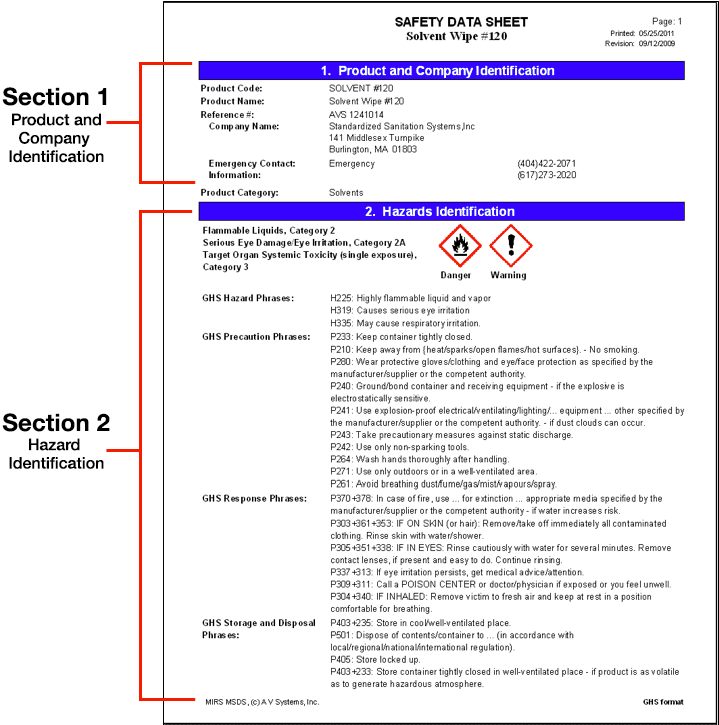

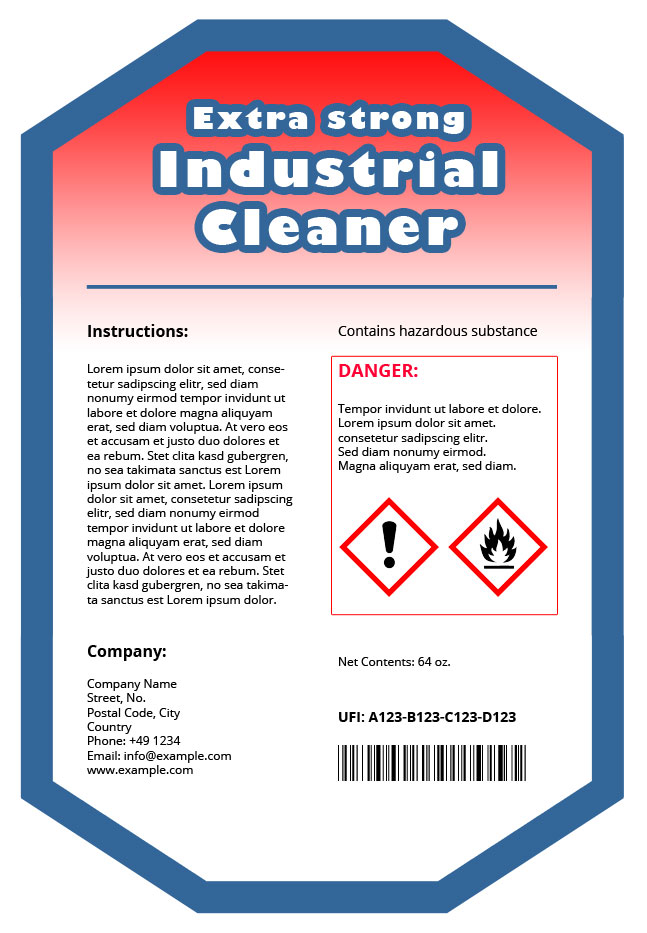


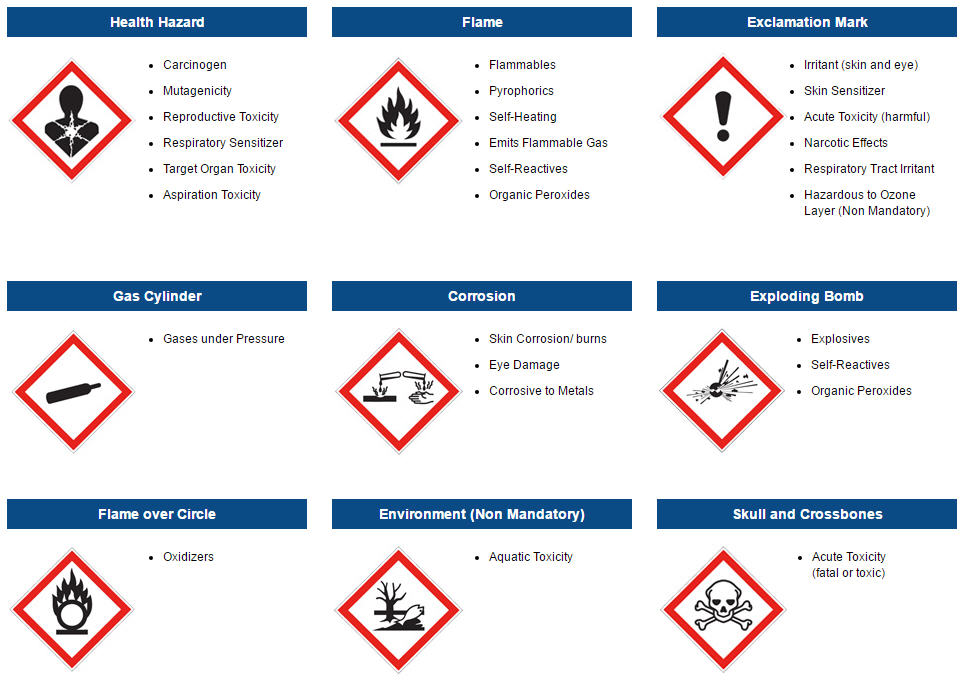
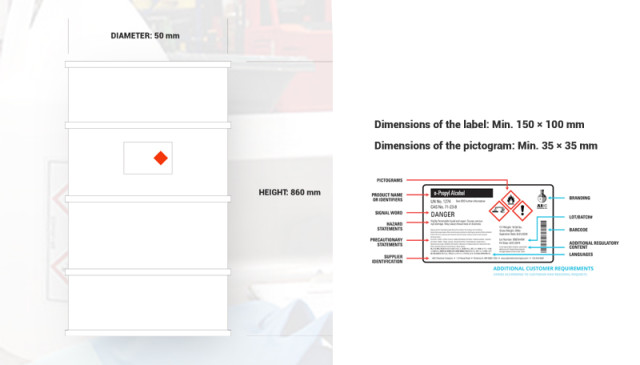
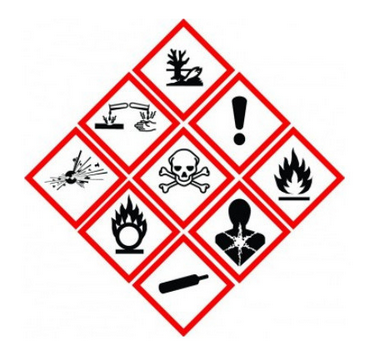
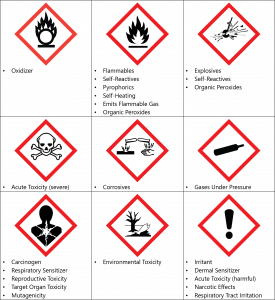

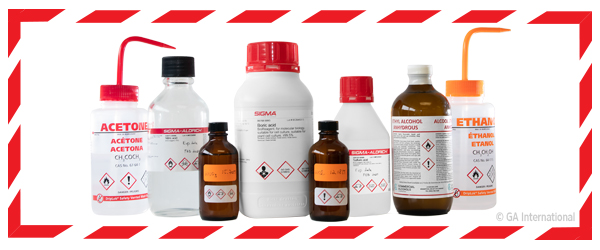

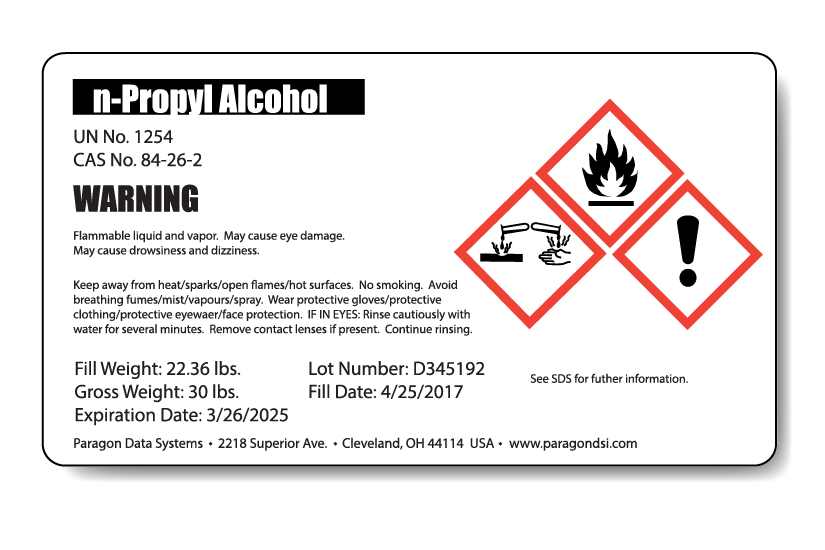



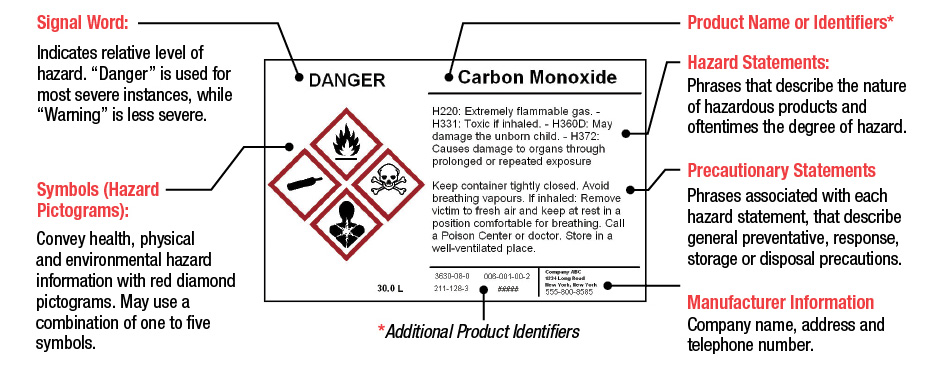
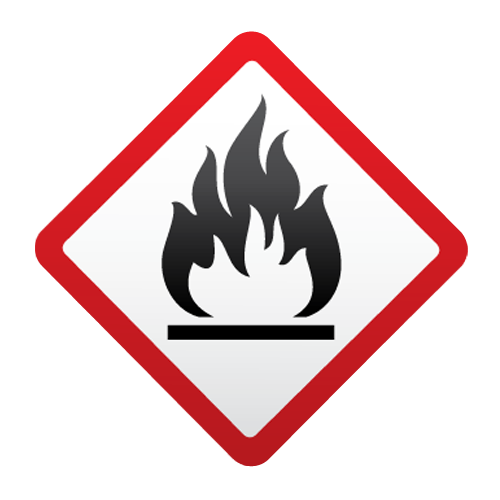
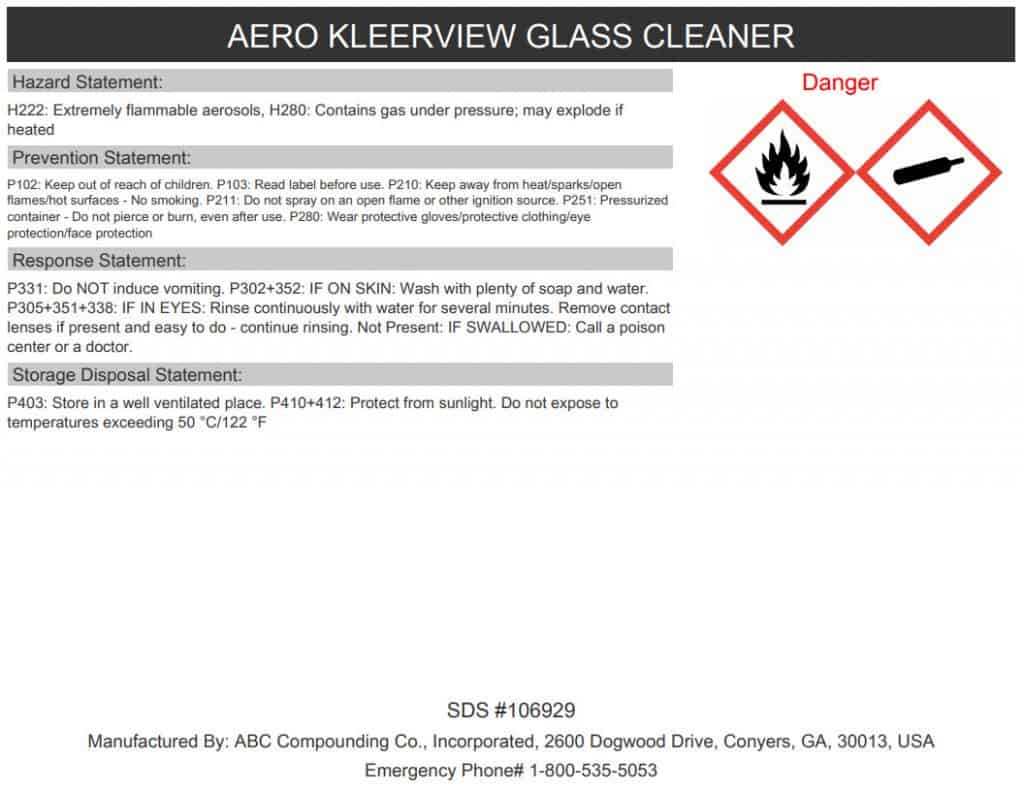
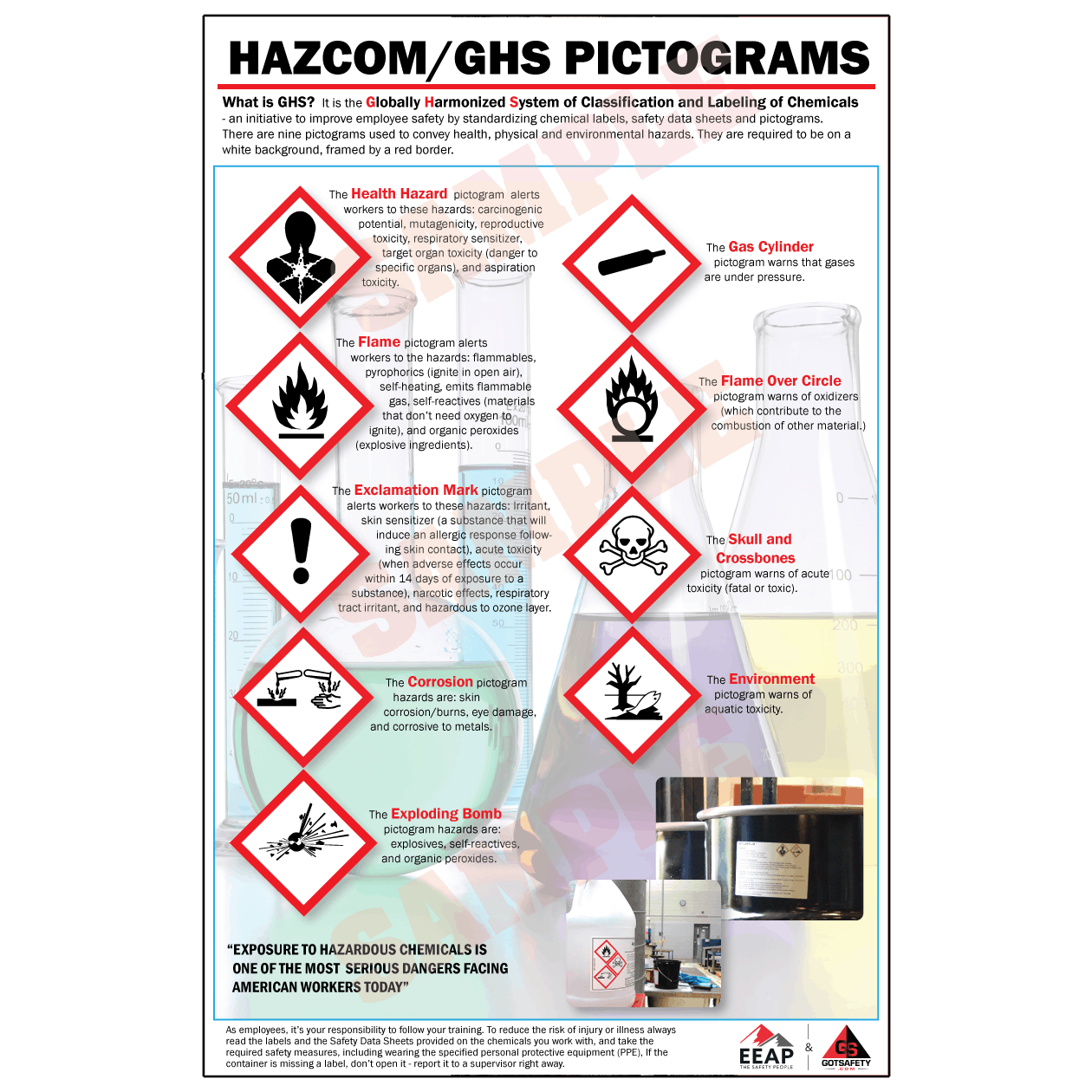

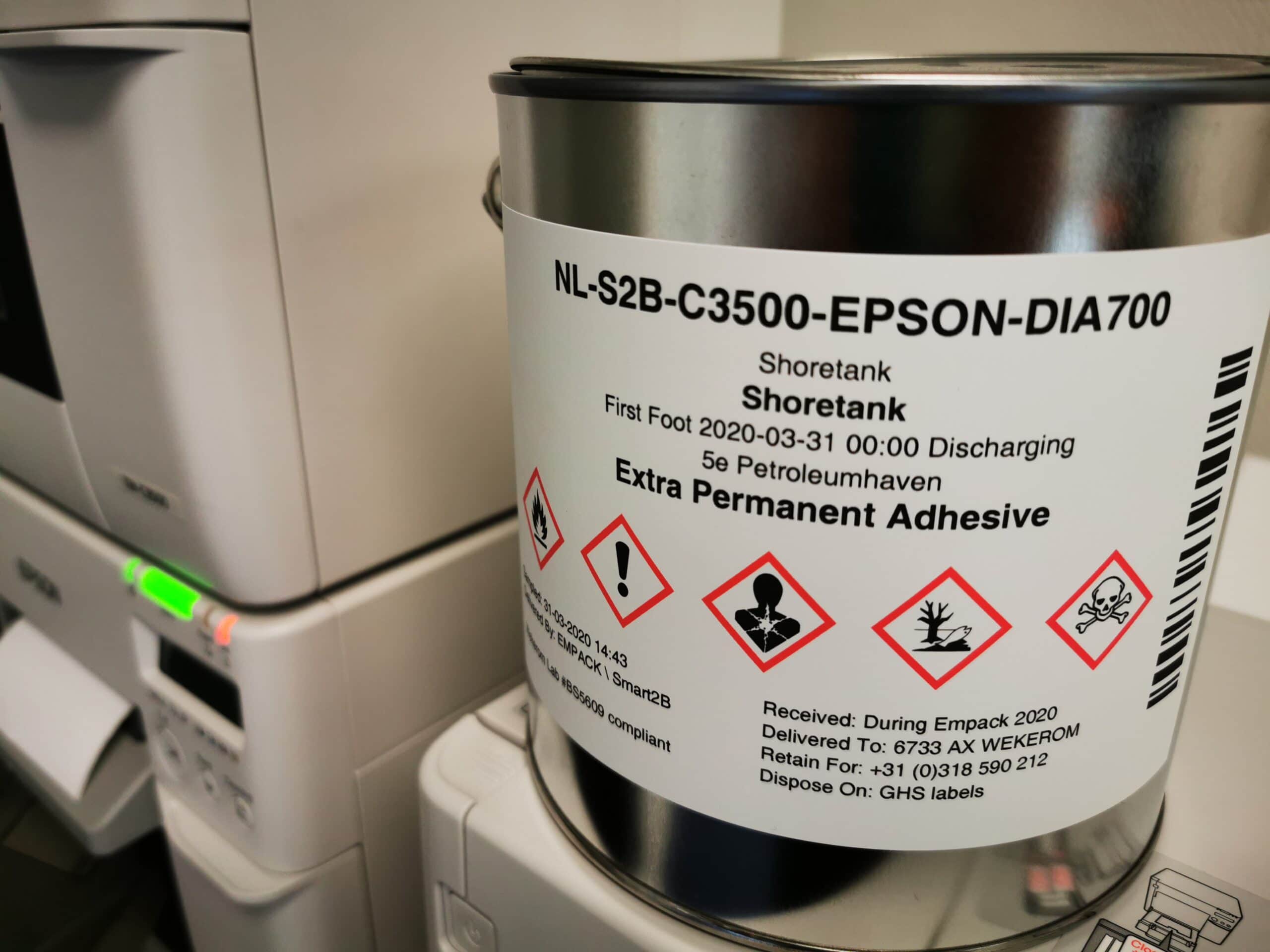
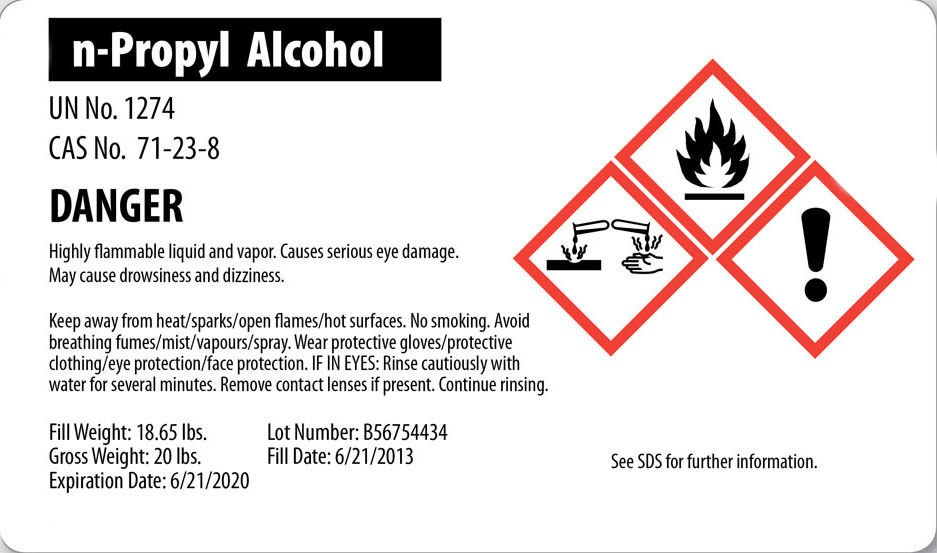







Post a Comment for "39 ghs label requirements 2020"